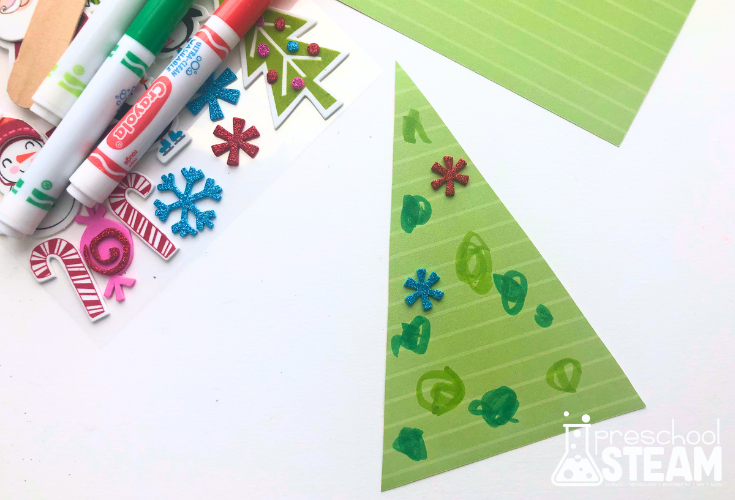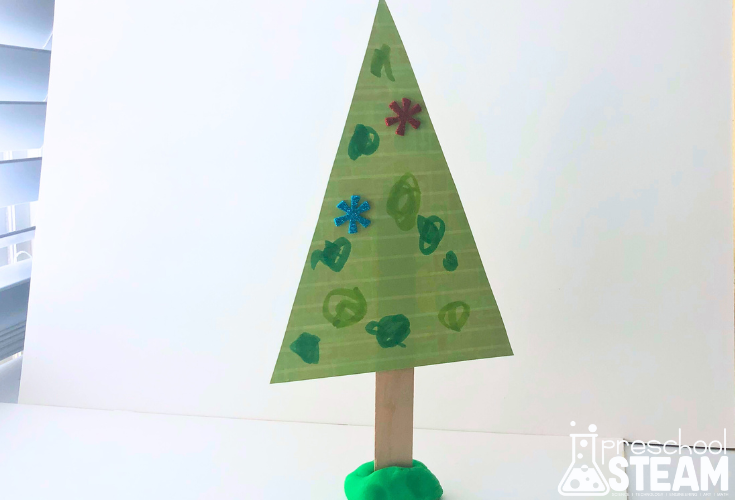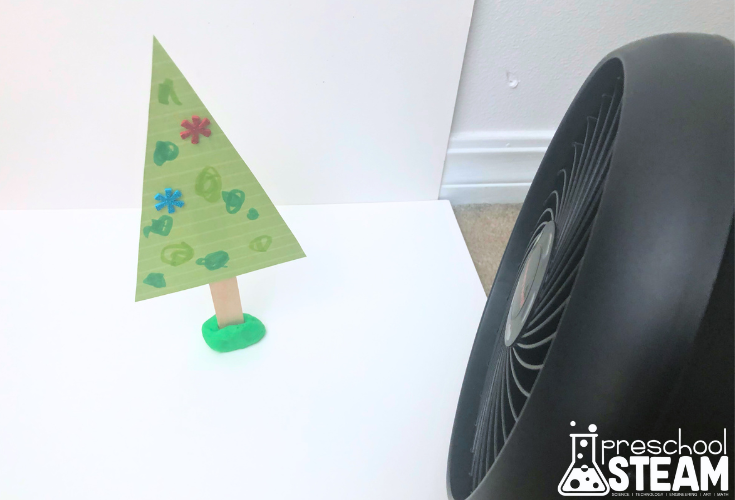Decorating Christmas trees is a favorite preschool tradition. Paint, stickers, glitter, what’s not to love?
But what if this classic holiday craft also became a playful engineering test?
In this week’s From Craft to STEAM challenge, we’re turning simple cardboard tree cutouts into a Winter Wind Test!
Children will design, build, and test their trees to discover what makes them strong, balanced, and stable—just like real engineers.

Step 1: Invite Play: Create and Decorate
Start with open-ended exploration.
Materials:
- Cardboard triangles (cut in advance into tree shapes)
- Paint, markers, and stickers for decorating
- Tape, play dough, or recycled lids for bases
- Craft sticks, paper tubes, or small blocks for stands
- A fan (or simply “blowing wind” from the children)
Let children first decorate their trees any way they’d like. This satisfies the creative, familiar part of the activity and gives each child ownership of their design.
Then pose your challenge:
“Can you make your Christmas tree stand strong in the winter wind?”

Step 2: Observe Wonder: What to Watch For
As children begin to build bases and test their designs, you’ll see their thinking come to life.
Watch how they:
- Experiment with different materials for the base
- Adjust the angle or width of the triangle
- React when their tree falls—and how they try again!
Listen for those powerful moments of curiosity:
“Mine fell down!”
“I need more tape!”
“It stands when I lean it this way!”
These problem-solving moments are the heart of Play-Based STEAM.
Teacher Tip:
Encourage children to test through play. Ask them to create “wind” with a fan, straw, or by blowing gently. Notice what changes or works best.

Step 3: Extend STEAM: Take the Learning Further
Science:
- Talk about wind and stability. What helps trees stay upright outside?
- Experiment with “wind speeds” (gentle vs. strong).
Technology:
- Use a fan or blow dryer on a low setting for consistent testing.
- Record which tree stands the longest.
Engineering:
- Encourage children to redesign their base for better balance.
- Build a “tree forest” together. Can all the trees survive the storm?
Art:
- Add creative flair with natural materials like sticks, pine needles, or leaves.
- Encourage patterns, textures, or holiday-themed designs.
Math:
- Compare the height or width of trees.
- Count how many seconds each tree stands in the “wind.”

Step 4: Reflect & Share
Bring your little engineers together to talk about their discoveries.
Ask:
- “What made your tree strong?”
- “What happened when the wind blew harder?”
- “What did you change to help it stay up?”
You can even create a simple chart showing which materials worked best for stability.
Celebrate the process! Each tree tells a story of creativity, experimentation, and perseverance.
Teacher Takeaway
When children decorate, test, and redesign their cardboard trees, they’re doing far more than crafting.
They’re exploring balance, force, and problem-solving through hands-on play.
By adding one curious question, “Can it survive the winter wind?” you transform a traditional craft into a powerful learning moment.
That’s the magic of Play-Based STEAM: familiar materials, fresh curiosity, real discovery.
Leave a Reply